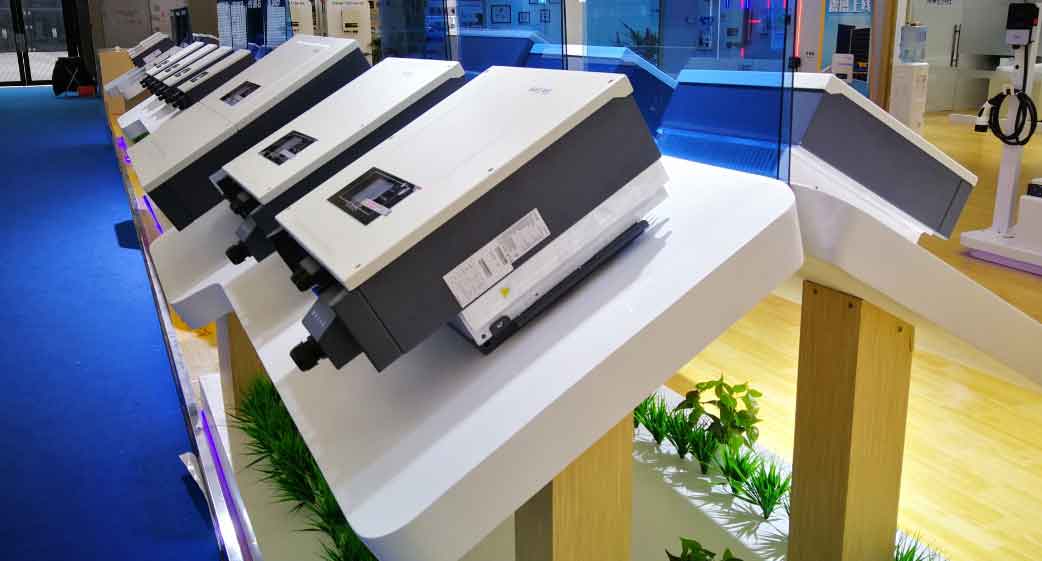With the increasing integration of renewable energy sources into power grids, photovoltaic (PV) systems have emerged as a pivotal solution for sustainable energy generation. However, the intermittent nature of solar energy, influenced by factors such as irradiance and temperature, poses significant challenges to grid stability. Energy storage inverters, particularly those integrated with lithium battery systems, play a critical role in mitigating these challenges by enabling peak shaving, valley filling, and enhancing power supply reliability. This study focuses on advanced control strategies for LCL-type photovoltaic energy storage inverters, addressing key issues such as maximum power point tracking (MPPT), resonance suppression, and harmonic mitigation.
Modeling and MPPT Algorithm Improvement for Photovoltaic Energy Storage Systems
The output characteristics of PV cells are governed by their mathematical model: [ I_L = I{ph} – I_o \left[ \exp\left(\frac{q(U + I_L R_s)}{A k T}\right) – 1 \right] – \frac{U + I_L R_s}{R{sh}}, ] where (I{ph}), (I_o), (R_s), and (R{sh}) represent photocurrent, reverse saturation current, series resistance, and shunt resistance, respectively. Under partial shading, the power-voltage (P-V) curve exhibits multiple peaks, necessitating robust MPPT algorithms.
Enhanced CS-INC MPPT Algorithm
Traditional MPPT methods, such as perturb-and-observe (P&O) and incremental conductance (INC), often struggle with local optima in multi-peak scenarios. To address this, a hybrid algorithm combining an improved cuckoo search (CS) with INC is proposed:
- Global Search Phase: CS leverages Lévy flight dynamics for rapid exploration: [ x_i^{t+1} = x_i^t + \alpha \cdot L(\beta), \quad L(\beta) = \frac{\phi \cdot \mu}{|\nu|^{1/\beta}}, ] where (\alpha) scales the step size, and (\mu), (\nu) follow normal distributions.
- Local Refinement Phase: Once near the global maximum, INC refines tracking: [ \frac{dP}{dV} = 0 \Rightarrow \frac{\Delta I}{\Delta V} = -\frac{I}{V}. ]
Simulation Results:
| Condition | CS-INC Tracking Time (s) | Power Error (%) |
|---|---|---|
| Uniform irradiance | 0.14 | 0.0 |
| Partial shading | 0.19 | 0.0 |
| The CS-INC algorithm demonstrates superior convergence speed and accuracy compared to conventional CS, particularly under dynamic environmental conditions. |
Modeling and Active Damping Control of LCL Grid-Connected Inverters
The LCL filter, while effective in attenuating high-frequency harmonics, introduces resonance peaks that destabilize the system. The state-space model in the (dq)-frame is derived as: [ \begin{cases} \frac{dI{1d}}{dt} = \frac{U_d – U{cd}}{L_1} – \frac{R_1}{L_1}I{1d} + \omega I{1q}, \ \frac{dI{2d}}{dt} = \frac{U{cd} – U{sd}}{L_2} – \frac{R_2}{L_2}I{2d} + \omega I{2q}, \ \frac{dU{cd}}{dt} = \frac{I{1d} – I{2d}}{C} – \omega U_{cq}. \end{cases} ]
Active Damping via Inverter-Side Current Feedback (ICFAD)
The ICFAD strategy emulates passive damping by introducing a virtual impedance (Z{eq}(s)): [ Z{eq}(s) = R \cdot e^{-1.5T_s s}, ] where (R) is the equivalent damping resistance. The closed-loop transfer function with ICFAD becomes: [ G_{LCL}(s) = \frac{1}{L_1 L_2 C s^3 + (R_1 L_2 + R_2 L_1)C s^2 + (L_1 + L_2 + R_1 R_2 C)s + R_1 + R_2}. ]
Bode Analysis:
- Without damping: Resonance peak at 3.56 kHz with -180° phase margin.
- With ICFAD ((K = 0.092)): Resonance suppressed, achieving a gain margin > 6 dB.
PI-Repetitive Composite Control Strategy
Repetitive control (RC) excels in periodic disturbance rejection but suffers from slow dynamics. A cascaded PI-RC structure is proposed to enhance transient performance:
Odd-Harmonic Repetitive Control
Reducing the internal model period to (N/2) targets odd harmonics: [ G_{ORC}(z) = \frac{Q(z)z^{-N/2}}{1 – Q(z)z^{-N/2}}, ] where (Q(z)) is a zero-phase low-pass filter. The compensator (C(z)) is designed as: [ C(z) = K_r z^M S(z), ] with (S(z)) being a second-order filter and (M) compensating phase lag.
Frequency-Adaptive Repetitive Control
Grid frequency fluctuations degrade RC performance. A fractional delay filter approximates non-integer delays: [ z^{-F} \approx \sum_{k=0}^n h_k(F) z^{-k}, \quad h_k(F) = \frac{(-1)^{n-k} F(F-1)\cdots(F-n)}{(n-k)!k!}. ] For (n=3), the coefficients are: [ h_0 = \frac{11 – 18F + 9F^2 – 2F^3}{6}, \quad h_1 = \frac{-2 + 5F – 4F^2 + F^3}{2}. ]
Simulation Results:
| Frequency (Hz) | THD (PI-RC) | THD (Adaptive PI-RC) |
|---|---|---|
| 49.6 | 1.12% | 0.46% |
| 50.4 | 0.90% | 0.38% |
System Implementation and Experimental Validation
A 10 kW three-phase energy storage inverter prototype was developed, incorporating:
- Hardware: LCL filter ((L_1 = 2 \, \text{mH}), (C = 5 \, \mu\text{F}), (L_2 = 0.5 \, \text{mH})), LiFePO4 battery bank, and TMS320F28377D DSP.
- Software: MPPT, active damping, and adaptive PI-RC algorithms implemented in CCS 9.3.

Experimental Results:
- Load Step Response:
- Voltage Overshoot: 2.29% (adaptive PI-RC) vs. 3.97% (conventional PI-RC).
- Settling Time: 12.8 ms (adaptive) vs. 26.5 ms (conventional).
- Grid Frequency Variation: The adaptive PI-RC maintains THD < 0.5% under ±0.4 Hz deviations.
Conclusion
This study presents a comprehensive approach to optimizing LCL photovoltaic energy storage inverters through enhanced MPPT, active damping, and adaptive repetitive control. The CS-INC algorithm improves global maximum tracking under partial shading, while ICFAD stabilizes LCL resonance without power losses. The frequency-adaptive PI-RC strategy ensures robust harmonic suppression under grid fluctuations, validated by both simulations and a 10 kW prototype. Future work will explore real-time frequency estimation and advanced grid synchronization techniques to further enhance reliability in weak-grid conditions.
Keywords: Energy storage inverter, MPPT control, active damping, PI control, repetitive control, frequency adaptation.
